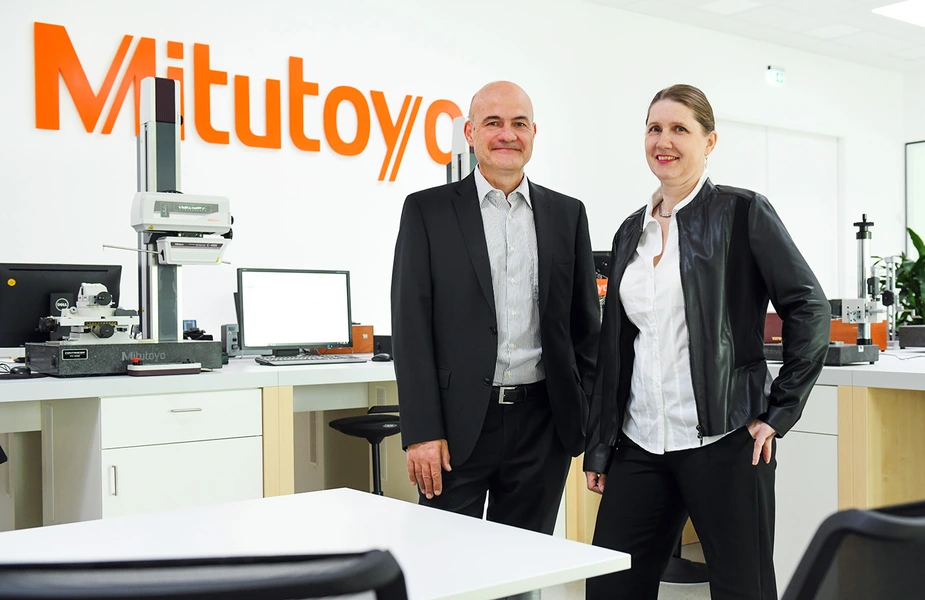Japanese cherries and measurement technology
Japanese culture is everywhere at the Adlershof-based branch of the measurement technology company Mitutoyo
‘Everything started with a calliper,’ says Ralph Streckfuß. The head of the Adlershof-based branch of the Japanese company Mitutoyo puts a curved, grey metallic tool on the table and starts turning on its screw. The tool is capable of measuring length and breadth of any given object on a hundredth-millimetre scale.
This scale was enough when Yehan Numata founded his company Mitutoyo in 1934. Nowadays, technology has reached nano-scale precision (millionth of a millimetre). Software-based measurement technology turned Mitutoyo into one of the leading international companies for high-precision and production measurement technology. Its product range includes instruments for hardness testing, coordinate and form measuring as well as optical instruments, sensor systems, and portable measurement devices using electronic data transmission.
The Adlershof-based branch also offers extremely heavy instruments used for high-precision measurements in the auto industry, or in machine engineering. ‘Individual components, including headlights, seats, fenders, and airbags, are produced all over the globe and then assembled at the manufacturing location,’ says Streckfuß. Much smaller objects for application in medical technology, for example, implants or scalpels, must be put together with great precision.
While the machines are almost exclusively built in Japan, much of the software is developed in Germany, or the US. Due to the durability of such products, says Streckfuß, the relationship between the company and the customer is long-term. It can last up to 30 years. ‘It’s basically like being married,’ the precision engineer laughs. This type of relationship requires that customers receive in-depth training and technical customer service throughout the lifespan of their devices.
These services are provided at the 700-sqm branch, which is replete with exhibition spaces, conference rooms and training facilities, and a fully air-conditioned room for high-precision measurements. The building’s silver-grey exterior is adorned with the company name is large orange letters; the orange branding also extends to the building’s interior. Photos of the holy Mount Fuji are reminiscent of the company’s home country, which is now represented in more than 100 counties.
Mitutoyo has been in Europe since 1968. It now has six branches in Germany with a total of 400 employees. ‘The Adlershof branch will consist of eleven employees for service, consulting, and customer training,’ says Streckfuß. Energy efficiency and smart technology are an integral part of the new building which is replacing the old branch in Bohnsdorf.
The official opening is scheduled for September. Since the EKO House of Japanese Culture in Düsseldorf is financially supported by Mitutoyo founder Numata, representatives of the centre for Buddist teachings will also be present at the official ceremony, which will include the planting of a Japanese cherry tree – a symbol for life, strength and resilience - at the Adlershof branch.
It is no coincidence that the tree symbolises three traits due to cultural and spiritual relevance of the number three in Japan. For the same reason, the company name includes the prefix ‘mitu’, or ‘mitsu’, which is Japanese for three. ‘Mitutoyo’ translates to ‘the plenty of the three elements.’ Yehan Numata, who is the son of a Buddhist temple minister, reinterpreted this as ‘being willing to innovate, being fair, and looking to the future.’
By Paul Janositz for Adlershof Journal
